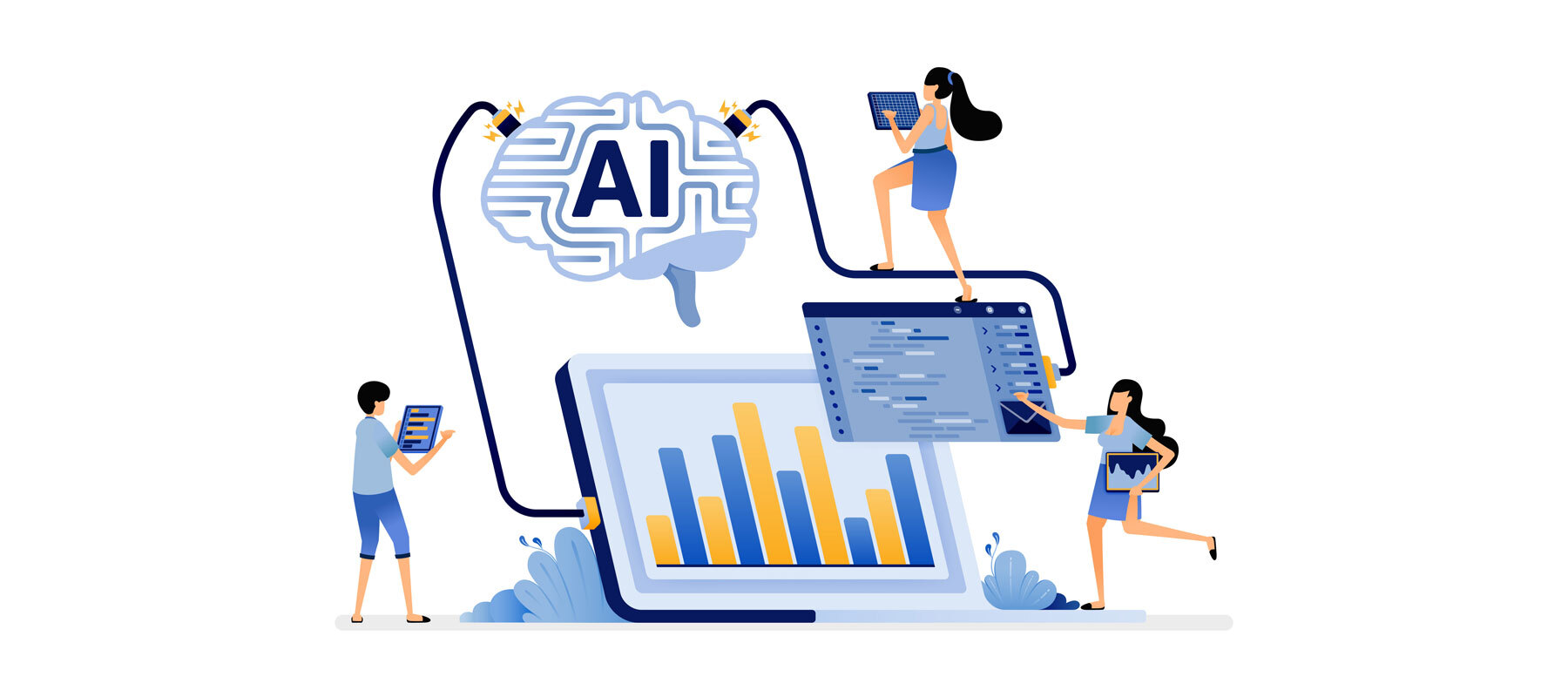Artificial Intelligence (AI) is revolutionizing industries worldwide, and User Experience (UX) design is no exception. As technology evolves, UX designers are exploring the potential of AI to create more intuitive and personalized experiences that adapt to users' preferences and behaviors. In this comprehensive blog post, we delve into the following:
- The ways AI is shaping UX design
- The benefits AI brings to UX design
- The challenges it presents
- Best practices for integrating AI into UX design
- Real-world examples of AI-driven UX design
AI in UX Design: Key Applications
AI has become an essential tool for UX designers, enabling them to analyze vast amounts of data and make informed design decisions. Some of the critical applications of AI in UX design include:
-
Personalization: AI allows designers to create personalized experiences tailored to individual users, enhancing user satisfaction and engagement. AI algorithms can dynamically adapt content, layouts, and recommendations by analyzing user behavior, preferences, and interactions to cater to each user's unique needs.
-
Predictive Analytics: AI helps designers make proactive design choices and optimize the user experience by anticipating user needs and preferences. Predictive analytics can identify trends and patterns in user behavior, enabling designers to create more compelling user flows, navigation structures, and content strategies.
-
Chatbots and Voice Assistants: AI-powered conversational interfaces provide users a more natural and intuitive way to interact with products and services. By understanding and processing natural language, these interfaces can offer personalized assistance, answer questions, and guide users through complex tasks, improving user satisfaction and reducing friction.
-
Automatic Layout and Content Generation: AI assists in creating and organizing content and designing layouts, ensuring consistency across various channels. By analyzing user data and content requirements, AI can generate layout templates, automatically organize content, and suggest relevant topics or media, streamlining the design process and improving efficiency.
-
Accessibility and Inclusivity: AI can analyze and adapt designs to meet the needs of users with disabilities, ensuring that digital products are accessible to a diverse audience. For example, AI algorithms can analyze color contrasts, font sizes, and other design elements to ensure compliance with accessibility standards and recommend adjustments when necessary.
-
User Segmentation: AI can help designers identify distinct user groups based on behavior and preferences, allowing for targeted and relevant design improvements. By segmenting users into groups with similar characteristics, designers can create tailored experiences that resonate with each group, leading to higher engagement and satisfaction.
Benefits of AI-Driven UX Design
AI has the potential to revolutionize UX design, offering numerous benefits:
-
Enhanced User Experiences: AI enables designers to create highly intuitive and personalized experiences catering to users' needs. By leveraging AI algorithms to analyze user behavior and preferences, designers can create tailored experiences that adapt to each user's unique context, resulting in a more satisfying and engaging user experience.
-
Improved Decision-Making: AI provides data-driven insights for informed design decisions, reducing the risk of costly mistakes. With AI-powered analytics, designers can identify trends, patterns, and areas of improvement, allowing them to make more strategic design choices and optimize the user experience.
-
Streamlined Workflows: AI-driven tools automate repetitive tasks, freeing up designers to focus on more strategic aspects of their work. Designers can save time and resources by automating tasks such as content organization, layout generation, and user segmentation, increasing efficiency and productivity.
-
Faster Time-to-Market: AI-powered analytics and automation allow designers to rapidly iterate on designs and bring new products to market faster. By reducing the time spent on manual tasks and analysis, designers can more quickly refine and launch their products, staying ahead of the competition and responding to evolving user needs.
-
Increased Conversion Rates: By creating personalized and intuitive user experiences, AI can help drive higher conversion rates and increased user engagement. With AI-driven personalization and optimization, designers can create more compelling user flows and calls to action, resulting in improved business outcomes.
-
Innovative Design Solutions: AI can inspire novel design solutions by uncovering hidden patterns and insights in user data, leading to breakthroughs in UX design. By analyzing large datasets and identifying unique correlations, AI can reveal previously undiscovered opportunities for design innovation.
Challenges and Considerations in Implementing AI in UX Design
While the benefits of AI in UX design are significant, there are also challenges and considerations to keep in mind:
-
Data Privacy and Security: Designers must handle user data ethically and securely, comply with privacy regulations, and protect personal information. Implementing robust security measures and obtaining user consent for data collection and usage is crucial to maintaining user trust and avoiding legal repercussions.
-
Algorithmic Bias: AI algorithms can unintentionally perpetuate existing biases in data, requiring designers to mitigate these biases for inclusive and equitable designs. Designers should be aware of potential biases in their data and work with AI experts to develop unbiased algorithms that promote fairness and diversity.
-
Balancing Automation and Human Touch: Designers must balance AI automation and maintaining the human element for empathetic, user-centric designs. While AI can streamline workflows and provide valuable insights, it is essential not to lose sight of human intuition, creativity, and empathy in the design process.
-
Keeping Up with Rapid Evolving Technology: Designers must stay current with AI advancements, tools, and best practices to remain competitive. As AI technology evolves, designers must adapt their skills and knowledge to stay at the forefront of the field.
-
Cost and Resource Considerations: Implementing AI in UX design can require significant investment in technology, infrastructure, and skilled professionals. Organizations should consider the costs and benefits of AI integration to ensure a positive return on investment.
-
Ethical Considerations: Designers should consider the ethical implications of using AI in their work, such as potentially manipulating user behavior or undermining user autonomy. Striking a balance between leveraging AI's capabilities and respecting users' rights is crucial to ethical and responsible AI-driven UX design.
Best Practices for Integrating AI in UX Design
To successfully integrate AI into UX design, consider these best practices:
-
Focus on User Needs: Prioritize user needs and preferences, using AI to enhance the user experience, not as a substitute for user-centered design principles. AI should be used to support and augment human-driven design decisions, always keeping users at the center of the process.
-
Collaborate with AI Experts: Work closely with AI experts, data scientists, and engineers to implement AI algorithms effectively and ethically. Cross-disciplinary collaboration can help ensure that AI-driven UX designs are technically sound and user-centric.
-
Test, Iterate, and Improve: Continuously gather user feedback, analyze data, and refine designs to ensure optimal, personalized user experiences. Regularly testing and iterating on designs can help identify areas for improvement and ensure that AI-driven solutions remain effective and relevant.
-
Emphasize Transparency and Trust: Build trust by ensuring users understand how their data is used and why AI is implemented in the design. Communicate openly with users about AI-driven features and their benefits, and offer users control over their data and personalization settings.
-
Ensure Accessibility and Inclusivity: Leverage AI to create accessible and inclusive designs, ensuring your digital products serve a diverse audience. Use AI algorithms to identify and address potential accessibility issues, such as color contrast or font size, and adapt designs to accommodate users with different abilities and needs.
- Stay Current with AI Developments: Continuously update your AI and UX design knowledge and skills to stay competitive in an ever-evolving field. Attend industry events, participate in online forums, and follow thought leaders to stay informed about AI advancements and their implications for UX design.
Real-World Examples of AI-Driven UX Design
Let's explore some real-world examples of how AI is transforming UX design:
-
Netflix: Netflix uses AI to create a highly personalized user experience, with tailored recommendations based on users' viewing history and preferences. The platform also uses AI to optimize thumbnail images, making them more appealing to individual users and driving higher engagement.
-
Spotify: Spotify leverages AI for its personalized playlists, such as Discover Weekly and Daily Mix, which are generated based on user's listening habits, preferences, and the listening habits of users with similar tastes. This personalization has contributed to Spotify's success and user satisfaction.
-
Amazon: Amazon uses AI to provide personalized product recommendations, tailoring its interface and content to users' browsing and purchase histories. This has contributed to Amazon's maintaining high conversion rates and customer satisfaction.
-
Grammarly: Grammarly's AI-powered writing assistant provides real-time feedback and suggestions to improve users' writing, making it more accurate, clear, and engaging. The tool analyzes users' writing style, tone, and context, offering personalized recommendations to enhance the user experience.
-
Google Maps: Google Maps uses AI to predict and suggest optimal routes based on real-time traffic data, user preferences, and historical patterns. This helps users save time and avoid congestion, resulting in a more satisfying user experience.
-
Airbnb: Airbnb uses AI to optimize its search results and property recommendations, considering user preferences, booking history, and property characteristics. This personalized approach helps users find the most suitable accommodations, enhancing user satisfaction and increasing booking rates.
Conclusion
Artificial Intelligence is transforming the field of UX design, offering numerous benefits such as enhanced user experiences, improved decision-making, streamlined workflows, and faster time-to-market. By addressing the challenges and embracing best practices, UX designers can harness the power of AI to create more intuitive and personalized experiences that delight users and drive business success. Real-world examples of AI-driven UX design demonstrate the potential of AI to redefine user experiences across industries, paving the way for a new era of innovation in UX design.






